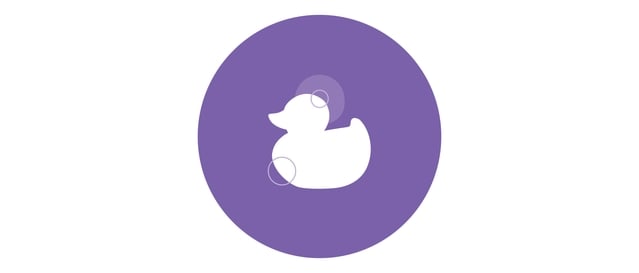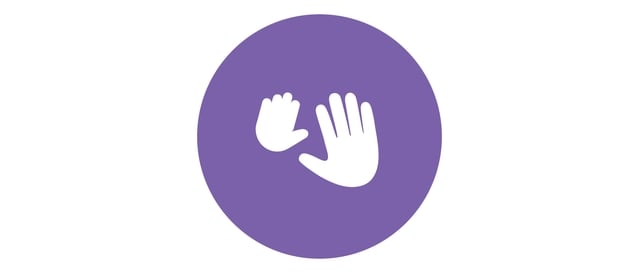How To Bathe a Newborn Baby
Watch this step-by-step video on how to bathe a baby for tips and tricks.
Johnson’s® 2-Step Bath Time Routine
Try our 2-step routine, to enhance the experience of touch between mom/dad and baby.
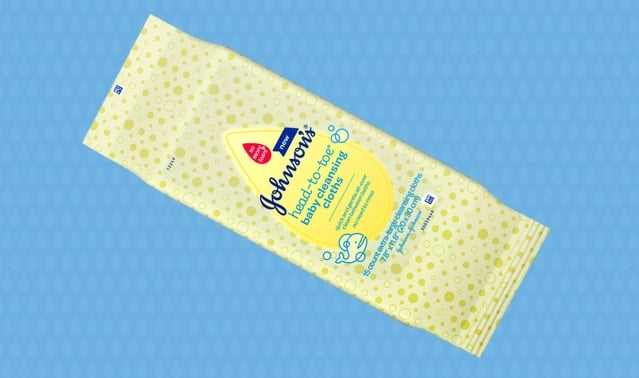
Baby Bath Time Without the Bath
Sometimes there’s not enough time to give your baby a bath. Head-To-Toe® cleansing cloths are pre-moistening, paraben- and phthalate-free and 2x bigger than average baby wipes, so you can clean your little one up whenever and wherever you need.
Did you know?
Playing in the bath with your toddler and providing him/her with lots of props like pitchers, cups and books boosts his/her learning and nurtures his/her bond with you.
Baby Bathing Tips & Tricks
A bath is a perfect way to create separation between "busy time" and "sleep time", while giving you the chance to bond with your baby. Here are some tips and tricks to make bath time a bit easier.
Clean only what you can see; avoid putting anything deep into your baby's ear canal or nose.
Every baby is different, but some don’t like to be bathed too soon after feeding. Many moms find it’s best to bathe baby before feeding.
Remember, part of keeping bath time fun is making sure your baby is safe. NEVER leave baby alone in the bath.
Be sure to set your water heater below 120 degrees to help prevent the possibility of scalding.

Wash With More Than Water
Water as a cleanser doesn't remove the fat-soluble impurities left behind under diapers and clothes, and if they remain, they can cause the delicate skin barrier* to break down. And water alone can actually dry your baby’s skin. Repeated use of water only, especially when hard or chlorinated, has been shown to cause moisture loss from the skin cells, which can leave baby skin irritated or red. A gentle cleanser designed for baby skin is recommended to cleanse effectively.
*The skin barrier is the upper layer of the skin that acts as a vital barrier to outside irritants, bacteria and allergens, helping protect the body from disease. Babies' skin barrier is uniquely different from adults’ and is still developing, so it needs special care.
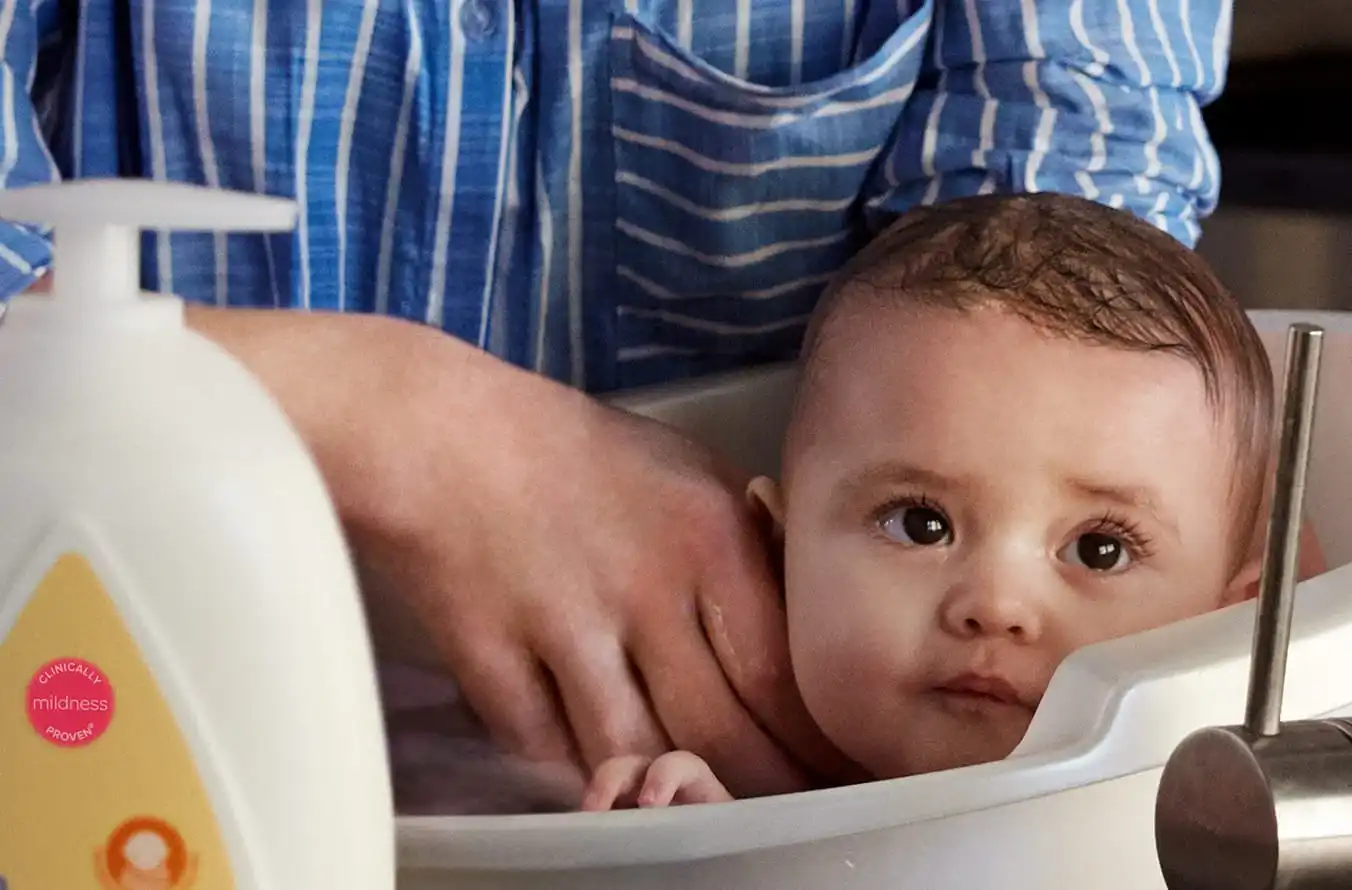
Baby Sponge Bath
Most pediatricians recommend bathing newborns 2 or 3 time per week, increasing the frequency as your baby gets older. Keep your baby clean between baths by giving your baby a sponge bath with a mild cleanser followed by moisturization using a baby oil or lotion.
Bath Time Helps Promote Social-Emotional Development
Your gentle, loving touch during the baby's bath and cuddle time afterward supports your baby’s healthy happy development. In fact, research shows that your touch promotes healthy social-emotional development and enhances your baby’s motor skills.
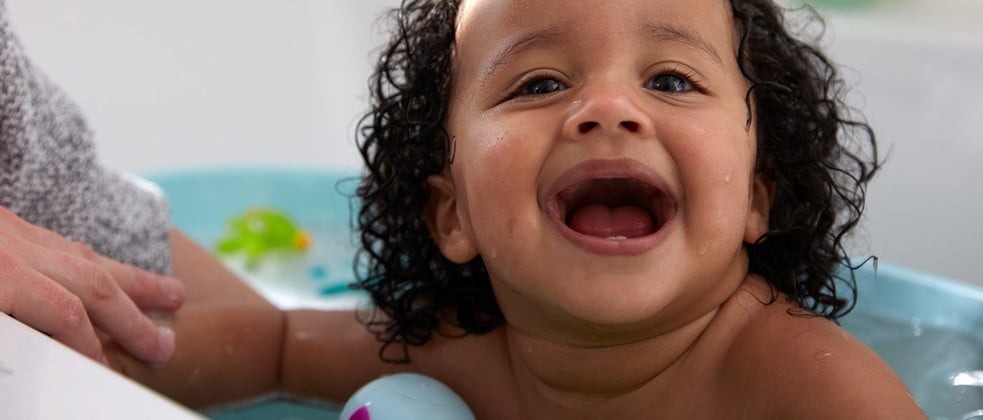
What You Can Do
Have fun and celebrate your child’s accomplishments, such as squeezing the water from the sponge or floating a toy.
Explore and play games like patting the water back-and-forth to make a splash.
Cuddle up together after bath time and share a bonding moment.
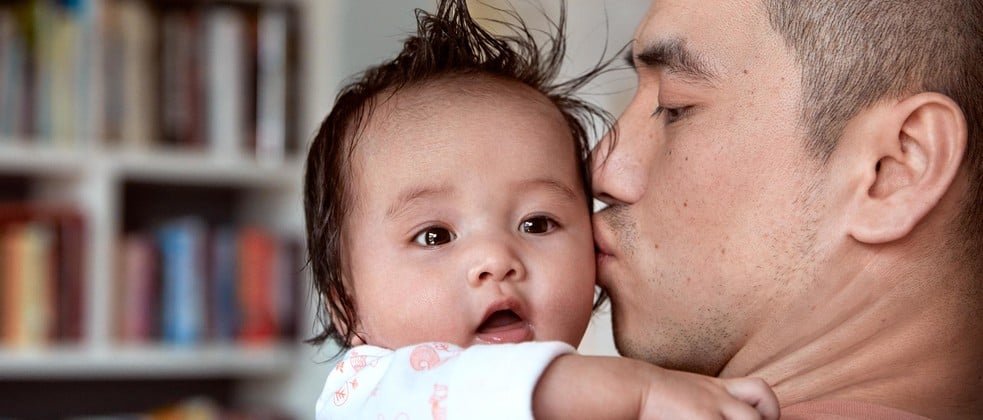
What This Teaches
He/She is smart and competent, and that you delight in sharing his/her discoveries when you play together.
The skill of taking turns and that engaging with activities together is fun and rewarding.
That he/she is loved, which builds his/her self-esteem.

